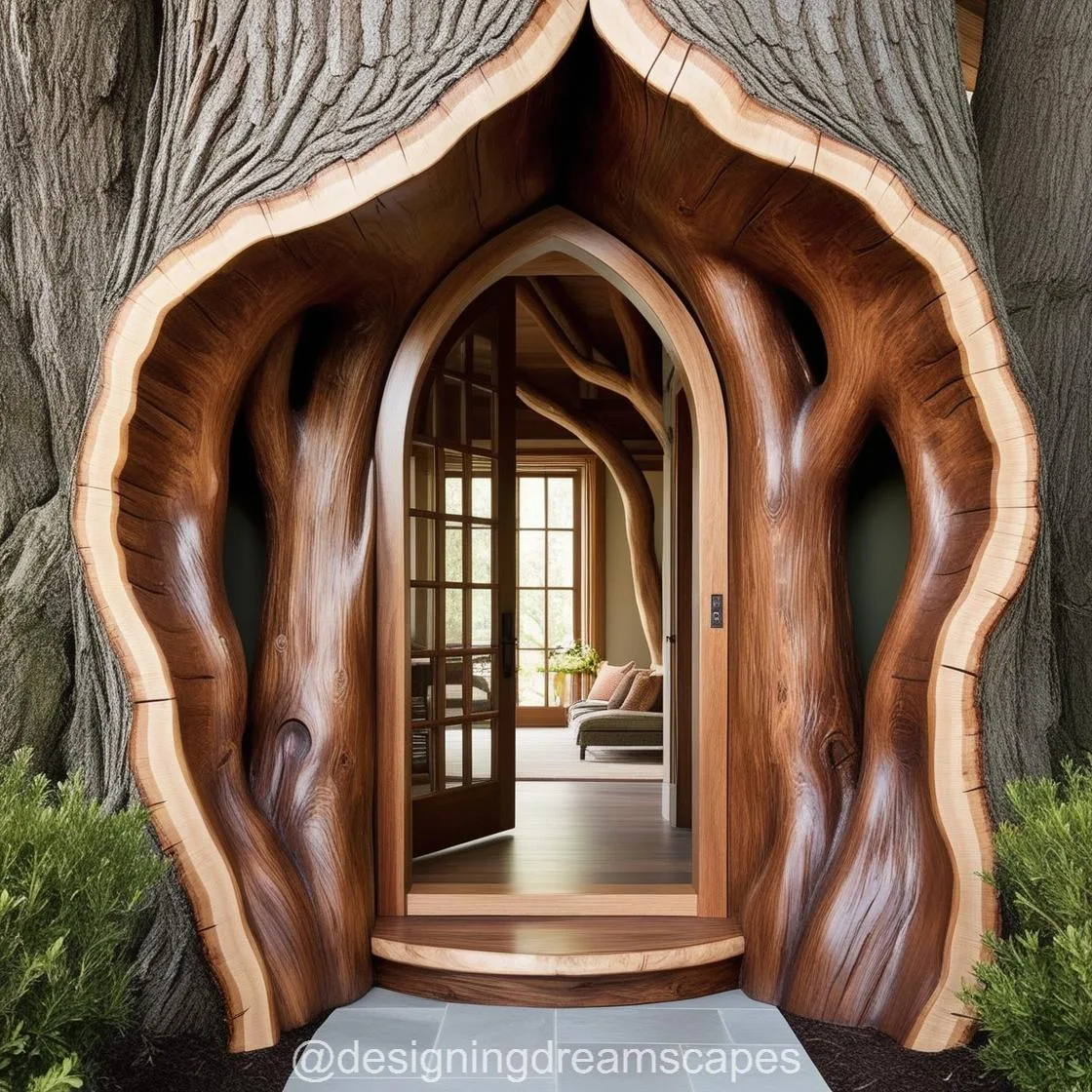Contents
The Beauty of Nature in Interior Design
In the world of interior design, nature has always been a source of inspiration. From using natural materials to bringing outdoor elements inside, designers have consistently turned to the great outdoors to bring a sense of tranquility and beauty to interior spaces. One of the most enchanting ways to incorporate nature into your home is through tree shaped doorways.
A tree-shaped doorway goes beyond simple architecture; it is an artistic representation of nature, offering a visual connection between the inside and the outside world. These doorways are not only functional but also create an awe-inspiring, whimsical atmosphere that evokes feelings of being enveloped by nature. Whether you are designing a rustic retreat or a contemporary space, tree-shaped doorways provide a unique and memorable entrance that blends both form and function.
In this article, we will delve deep into the concept of tree-shaped doorways, exploring their significance, design possibilities, and how they can transform your home. We will also discuss the cultural and symbolic meanings behind trees, the different materials and styles used, and how you can integrate these designs into your own home.
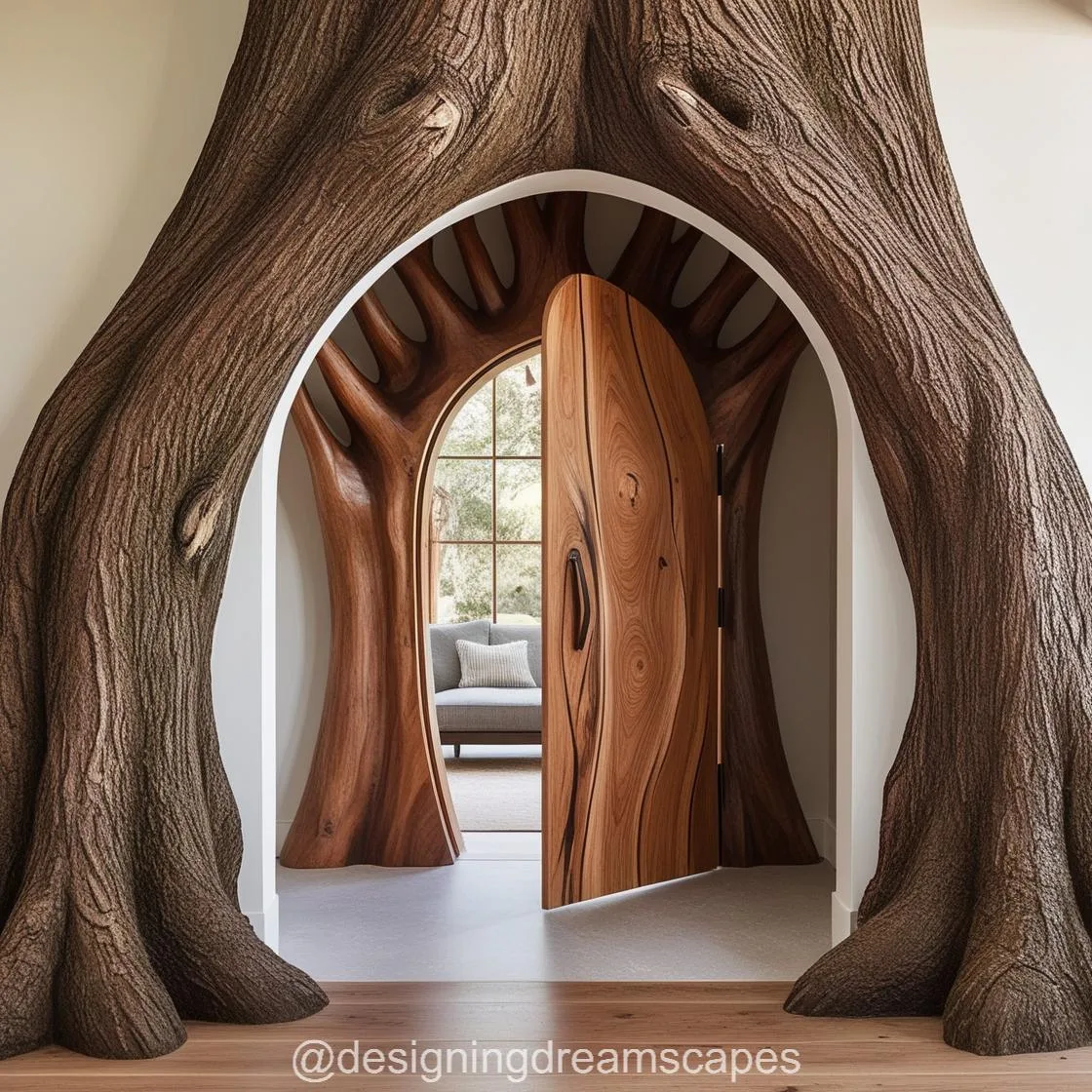
The Symbolism and Meaning of Trees in Architecture
Before we dive into the design aspects of tree-shaped doorways, it’s important to understand the deep symbolism and meaning that trees hold in various cultures and architectural styles. Throughout history, trees have been regarded as symbols of life, growth, and connection to the earth. In many cultures, they represent strength, wisdom, and longevity.
The Tree as a Symbol of Life
Trees have long been considered sacred symbols in many ancient cultures. In Celtic mythology, for example, the Oak tree represented strength, while the Willow tree symbolized intuition and adaptability. In Hinduism, the Bodhi tree is revered as the tree under which Siddhartha Gautama achieved enlightenment. Similarly, the Tree of Life in various religious and philosophical traditions represents the interconnectedness of all life forms, with its branches reaching towards the heavens and its roots delving deep into the earth.
By incorporating tree-shaped doorways into your home, you are inviting these powerful symbols into your living space. A tree-shaped doorway is not merely an entrance; it can serve as a reminder of the beauty and wisdom inherent in nature, fostering a sense of peace, balance, and spiritual connection within the home.
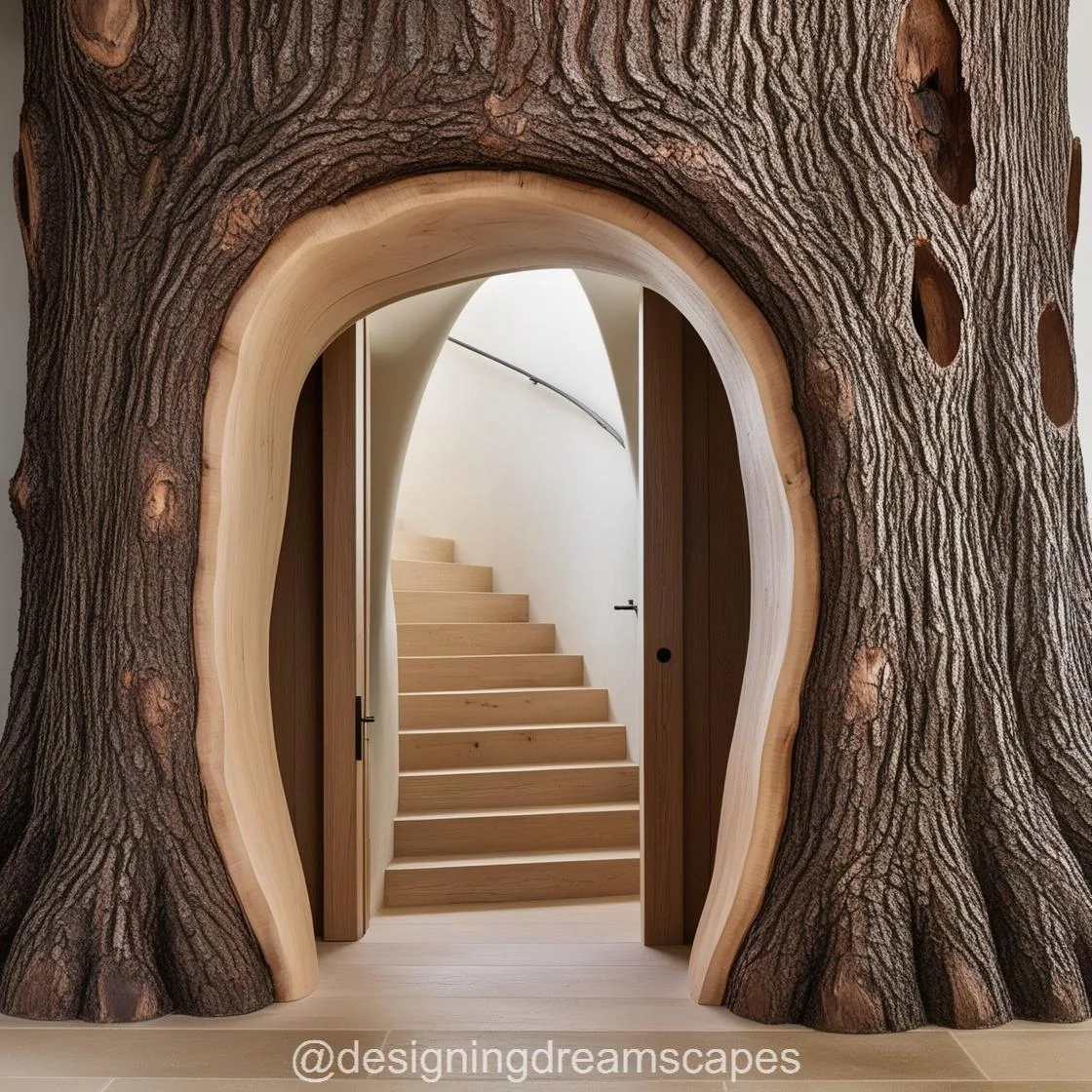
Tree Shaped Doorways in Architecture
Historically, trees have also been incorporated into architectural designs. In ancient temples, palaces, and even residential buildings, trees have been represented in carvings, columns, and entrances. Tree motifs have been used in many cultures to evoke the sacredness of nature and its presence in the human world.
For instance, in traditional Indian architecture, the torana (a ceremonial gateway) often features tree-like elements that signify protection, prosperity, and auspicious beginnings. Similarly, in medieval European architecture, tree-like arches or gateways could symbolize entry into a sacred space or garden, where the natural world and divine forces meet.
The concept of tree-shaped doorways in modern design draws upon this rich historical context while blending contemporary materials and artistic expression to create entrances that feel both ancient and timeless.
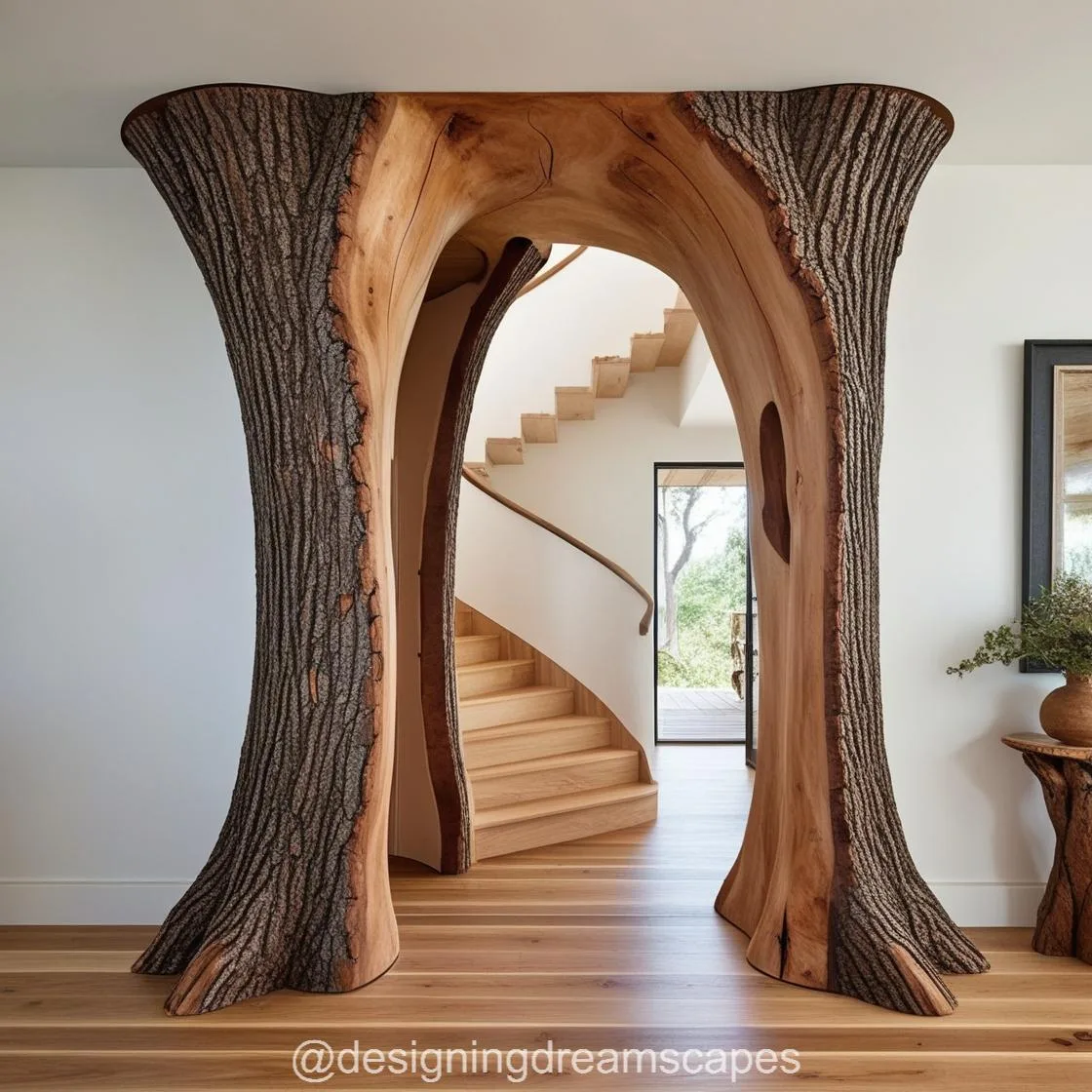
Exploring Tree Shaped Doorway Designs
Now that we have a deeper understanding of the symbolism behind trees in architecture, let’s explore the various ways tree-shaped doorways can be designed and implemented in your home. These designs can range from subtle tree motifs carved into wood to grand, sculptural entrances that evoke the image of a forest.
1. Sculptural Tree Shaped Doorways
One of the most striking ways to integrate tree shapes into a doorway is through sculptural designs. These doorways often feature intricate carvings or even three-dimensional forms of trees that seem to grow and twist around the frame. This style works particularly well in larger homes or spaces with high ceilings, where the grand scale of the design can truly shine.
For example, a tree trunk doorway might feature a series of twisting branches that arch above the entrance, with leaves or vines delicately carved along the surface. This design could evoke the feeling of walking through a magical forest, creating an enchanting first impression when entering the home. Depending on the design, sculptural tree-shaped doorways can be crafted from a variety of materials, such as wood, metal, or stone, each offering a unique texture and aesthetic.
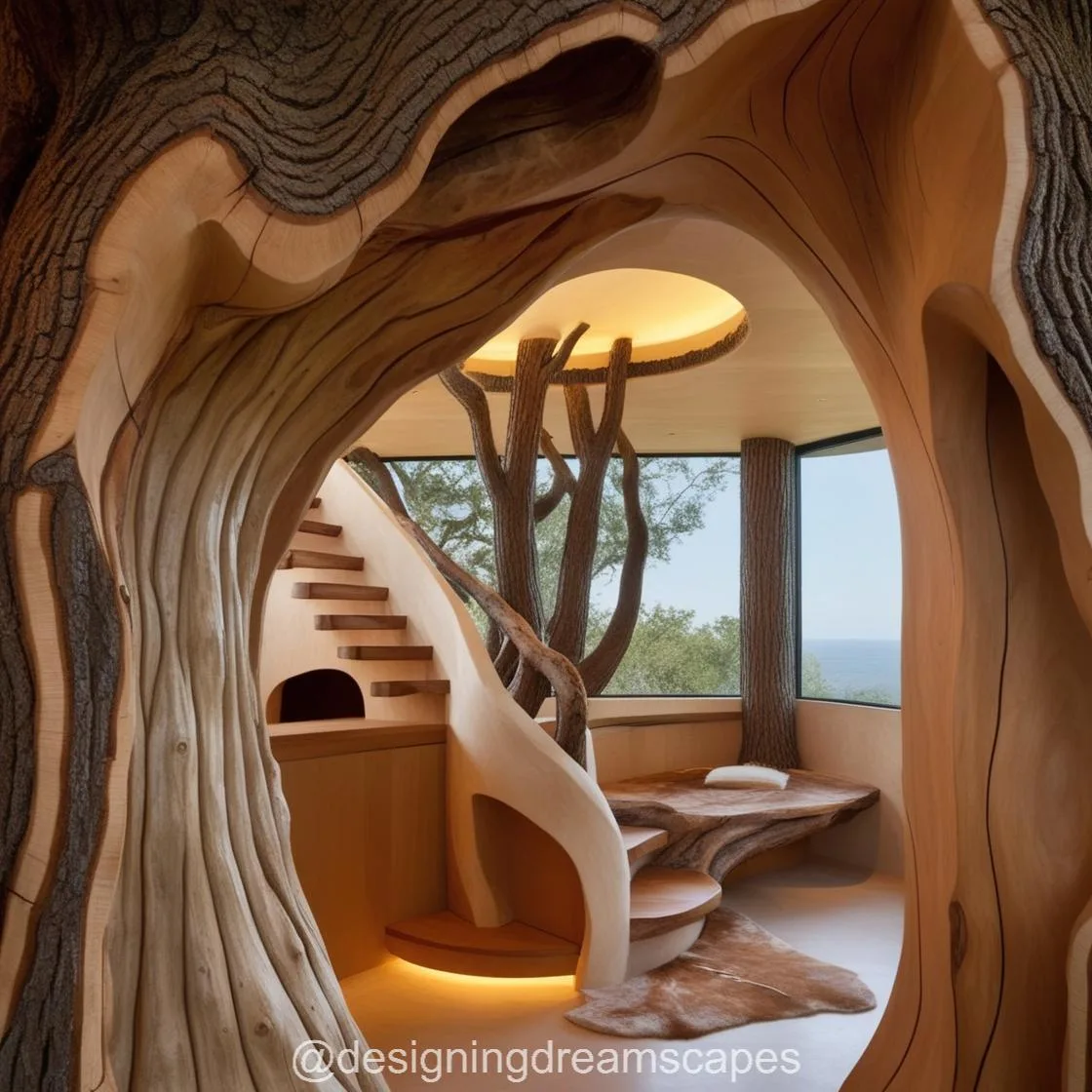
2. Minimalist Tree Silhouettes
If you prefer a more subtle and modern interpretation of tree-shaped doorways, you might opt for minimalist tree silhouettes. These designs use simple lines and shapes to represent the form of a tree without overwhelming the space. A minimalist tree doorframe might feature a slender, vertical design with the branches subtly suggested through geometric lines. This type of doorway often blends seamlessly into contemporary homes, offering a refined yet nature-inspired entrance.
Another minimalist approach is the use of etched glass with tree patterns or frosted designs. This allows natural light to filter through the doorway while creating a soft, serene atmosphere. The tree imagery on the glass could feature leaves, branches, or even abstract representations of trees that evoke a feeling of lightness and tranquility.
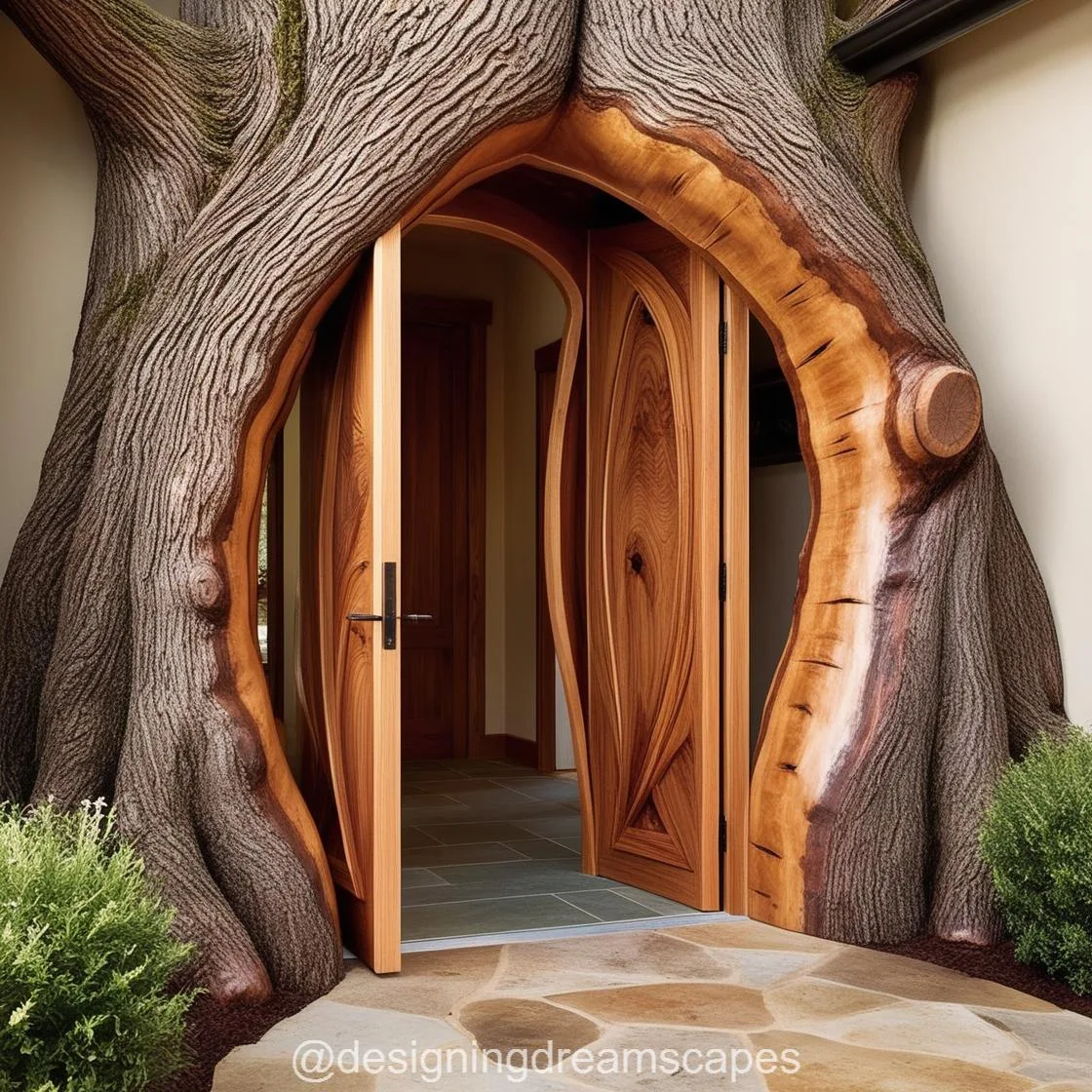
3. Rustic Tree-Inspired Doorways
For those who appreciate a more rustic, earthy feel, a tree-shaped doorway can be designed using reclaimed wood, branches, or natural stone. In this style, the doorway might be constructed using an actual tree trunk or large branches that form the frame. This approach offers a more organic, raw aesthetic, allowing the natural texture of the materials to shine.
A branch doorway might use intertwined branches to form the frame, creating a warm, natural entrance that feels as if it’s been part of the landscape for centuries. For added charm, consider incorporating moss or lichen on the branches to enhance the natural, outdoor feel. Rustic tree-inspired doorways are perfect for homes in rural or woodland settings, where the design can blend harmoniously with the surrounding environment.

4. Tree Arches and Canopies
Another popular way to integrate tree-shaped designs into doorways is through the use of arches or canopies that mimic the shape of tree branches. These designs create the illusion of walking through a natural archway formed by the trunks and branches of trees. This style can be used to frame the doorway or to create an entire entrance canopy that welcomes visitors with the feeling of stepping into a peaceful garden or forest.
The design could involve iron or steel framing to mimic the delicate yet sturdy form of tree branches. This modern take on tree-shaped doorways can provide a more industrial or contemporary vibe while still evoking the feeling of nature’s embrace. Alternatively, the use of natural wood beams can enhance the rustic charm of the design.

Integrating Tree Shaped Doorways into Your Home
Now that we’ve explored the various design styles of tree-shaped doorways, let’s discuss how you can incorporate these entrances into your own home. Whether you’re building a new home or renovating an existing space, tree-shaped doorways can add a unique touch that elevates the overall design.
1. Choosing the Right Material for Your Doorway
The material you choose for your tree-shaped doorway will play a crucial role in the final aesthetic. For rustic and traditional designs, wood is often the material of choice. Wood offers a natural, warm quality that enhances the organic feel of tree motifs. Consider using reclaimed wood for an eco-friendly option that adds character and history to the design.
For more modern or industrial spaces, metal and glass can be used to create sleek, contemporary tree-shaped doorways. Metal branches or frames can be intricately designed to mimic the delicate structure of trees, while glass panels can feature etched or frosted tree patterns, allowing natural light to shine through.

2. Placement and Functionality
When planning a tree-shaped doorway, consider its placement within your home. These designs work best as entrance points to private or sacred spaces, such as a home office, meditation room, or garden area. They can also be used as dramatic features in living rooms or hallways, adding an element of surprise and wonder.
Functionality is also an important consideration. If you are designing a tree-shaped sliding door or folding door, make sure the mechanism is smooth and practical. The aesthetic beauty of the design should not be overshadowed by a cumbersome or inefficient operation.
3. Adding Nature-Inspired Accents
Once you’ve installed your tree-shaped doorway, you can enhance the natural theme by incorporating other nature-inspired elements into the room. Indoor plants, for example, can help create a seamless connection between the doorway and the interior of the home. Consider adding hanging plants, potted trees, or large leafy plants to bring the outside in and complement the design of your tree-shaped entrance.
Additionally, natural lighting can further highlight the beauty of your tree-shaped doorway. Positioning the doorway near windows or skylights can allow sunlight to illuminate the tree motifs, creating beautiful shadows and patterns on the walls.
Conclusion: Embracing Nature Through Tree Shaped Doorways
Tree-shaped doorways are more than just functional entrances; they are artistic expressions that invite the natural world into your home. With their deep cultural significance and symbolic meanings, these nature-inspired doorways create a sense of peace, tranquility, and connection to the earth. Whether you opt for a sculptural, minimalist, rustic, or arching design, a tree-shaped doorway has the power to transform your space into a serene, nature-filled sanctuary.
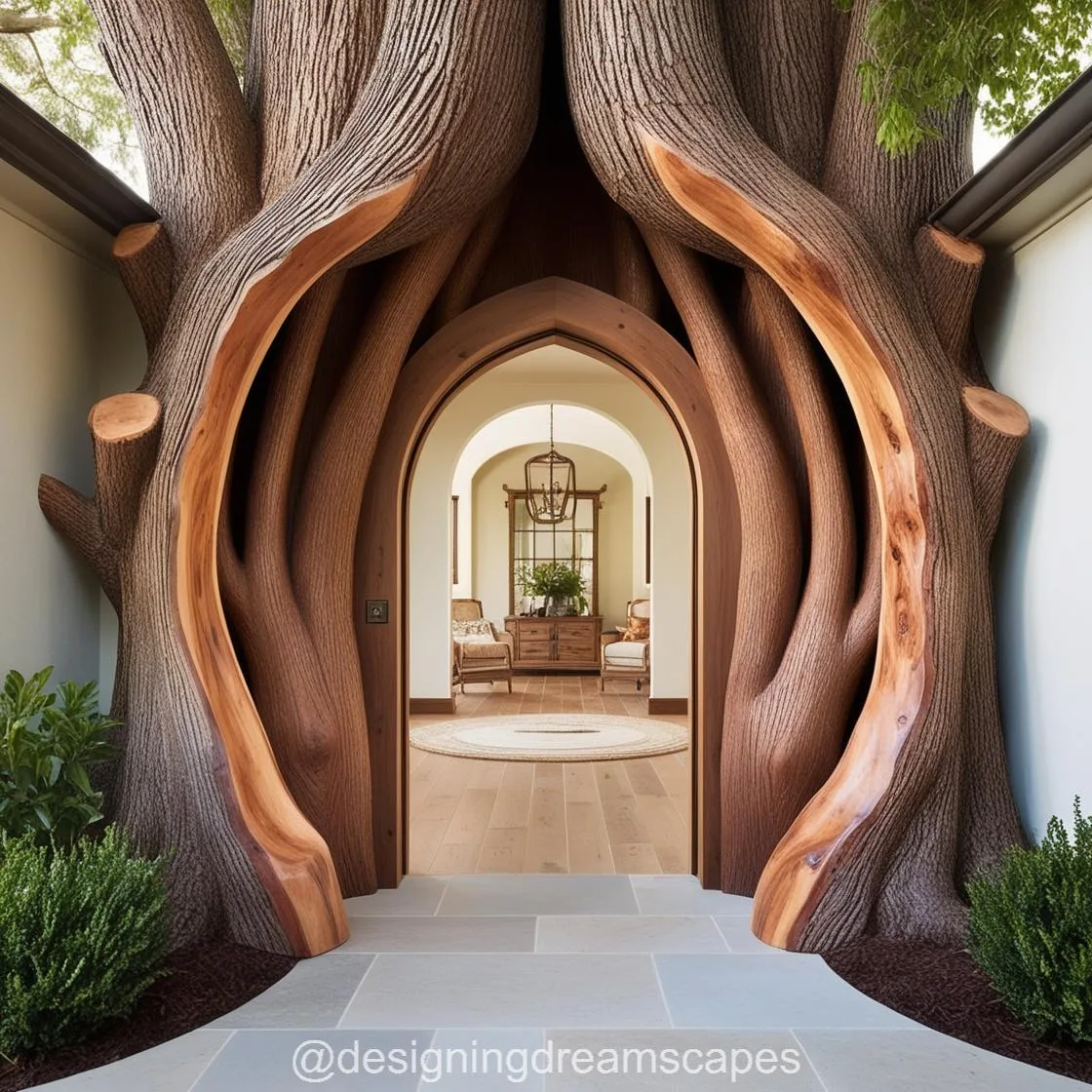
By choosing materials that resonate with the beauty of nature and integrating these designs thoughtfully into your home, you can create an entrance that not only enhances the aesthetic appeal of your space but also promotes a sense of balance and harmony. Embrace the charm and symbolism of tree-shaped doorways, and let them guide you into a world where nature and design coexist beautifully.

